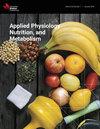探索性研究年轻人和老年人的心率和心率变异性对白天高温暴露的反应。
IF 2
4区 医学
Q3 NUTRITION & DIETETICS
引用次数: 0
摘要
心率变异性(HRV)作为一种监测热应变的工具已显示出其潜力,但支持其对长期暴露在高温下的老年人有效的数据却很有限。我们比较了年轻人(19-31 岁,20 人)和老年人(61-78 岁,39 人)在 9 小时热暴露(40°C,9% 相对湿度)期间的心率变异。我们还探讨了心率(HR)和/或心率变异是否可用于区分热应变升高的老年人,热应变升高的定义为:1)核心温度升高 >1.0°C(发生率为 39% [15/39])或 2)收缩压降低 >10 mm Hg(发生率为 67% [26/39])。在热暴露期间,老年人的年龄预测最大心率百分比和心率储备百分比(HRR)较高,而正常心率间期标准偏差(SDNN)、连续心率间期平方差均值的平方根(RMSSD)、高频功率(HF)和心迷走神经指数(CVI)则低于年轻人(P≤0.004)。在老年人中,核心温度的升高与年龄预测的最大心率百分比、心率变异百分比、RMSSD 和 CVI 相关(P≤0.031),而收缩压的变化与心率或心率变异指数无明显关联(P≤0.327)。接收者操作特征曲线分析表明,心率和心率变异指数识别热应变升高的老年人的能力普遍较差(曲线下面积≤0.65)。与年龄相关的心率变异差异在老年人中与迷走神经退缩相一致,在日间高温暴露期间仍然存在,但反应的明显异质性可能导致心率变异在识别老年人核心体温或血压变化方面的鉴别价值有限。本文章由计算机程序翻译,如有差异,请以英文原文为准。
An exploratory investigation of heart rate and heart rate variability responses to daylong heat exposure in young and older adults.
Heart rate variability (HRV) has shown potential as a tool for monitoring thermal strain, but there is limited data to support its efficacy in older adults during prolonged heat exposures. We compared HRV between young (19-31 years, n=20) and older (61-78 years, n=39) adults during 9 hours of heat exposure (40°C, 9% RH). We also explored whether heart rate (HR) and/or HRV could be used to distinguish older adults who achieved elevated thermal strain, defined as either 1) an increase in core temperature >1.0°C (occurring in 39% [15/39]) or 2) a reduction in systolic blood pressure >10 mm Hg (occurring in 67% [26/39]). Percentage of age-predicted maximal HR and percentage of heart rate reserve (HRR) were higher, whereas standard deviation of normal RR intervals (SDNN), the square root of the mean of squared differences between successive RR intervals (RMSSD), high frequency power (HF), and cardiac vagal index (CVI) were lower in older compared to young adults (P≤0.004) during heat exposure. In older adults, increases in core temperature were correlated with percentage of age-predicted maximal HR, percentage of HRR, RMSSD, and CVI (P≤0.031), whereas changes in systolic blood pressure were not significantly associated with HR or HRV indices (P≤0.327). Receiver operating characteristic curve analysis indicated that HR and HRV indices had generally poor ability to identify older adults with elevated thermal strain (area under the curve ≤0.65). Age-related differences in HRV, consistent with vagal withdrawal among older adults, remained during daylong heat exposure, but marked heterogeneity of response likely contributed to HRV providing limited discriminatory value in identifying changes in core temperature or blood pressure in older adults.
求助全文
通过发布文献求助,成功后即可免费获取论文全文。
去求助
来源期刊
CiteScore
6.50
自引率
2.90%
发文量
113
审稿时长
4-8 weeks
期刊介绍:
Applied Physiology, Nutrition, and Metabolism publishes original research articles, reviews, and commentaries, focussing on the application of physiology, nutrition, and metabolism to the study of human health, physical activity, and fitness. The published research, reviews, and symposia will be of interest to exercise physiologists, physical fitness and exercise rehabilitation specialists, public health and health care professionals, as well as basic and applied physiologists, nutritionists, and biochemists.

 求助内容:
求助内容: 应助结果提醒方式:
应助结果提醒方式:


